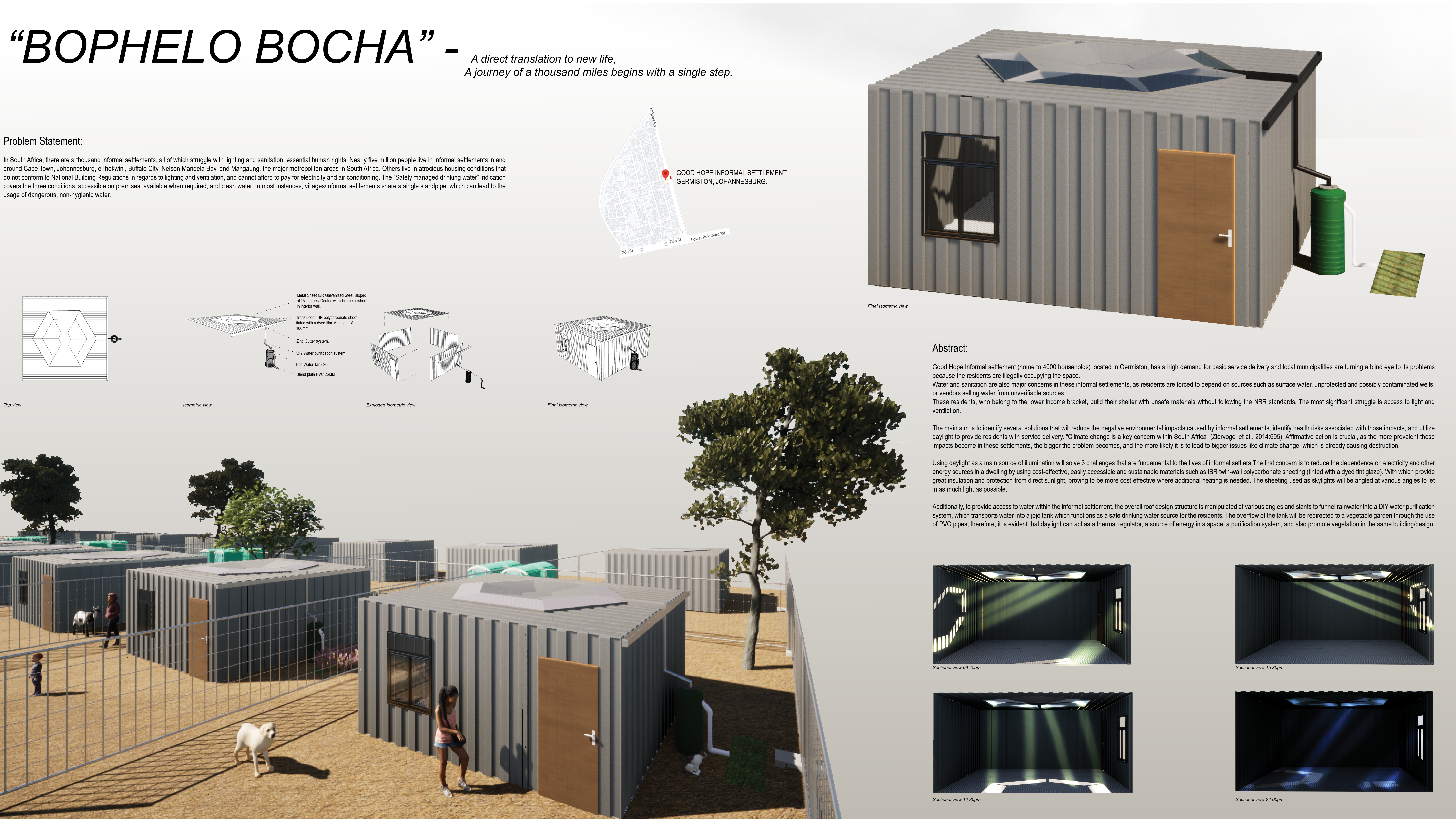Bophelo Bocha

Category
Daylight in buildings - Region 5: Africa
Students
3'rd year interior designer
Teacher
Jean Wiid
School
Greenside Design Centre, College of Design
Country
South Africa
Download
Download ↓
In South Africa, there are a thousand informal settlements, all of which struggle with lighting and sanitation, essential human rights. Nearly five million people live in informal settlements in and around Cape Town, Johannesburg, eThekwini, Buffalo City, Nelson Mandela Bay, and Mangaung, the major metropolitan areas in South Africa. Others live in atrocious housing conditions that do not conform to National Building Regulations in regards to lighting and ventilation, and cannot afford to pay for electricity and air conditioning. The “Safely managed drinking water” indication covers the three conditions: accessible on premises, available when required, and clean water. In most instances, villages/informal settlements share a single standpipe, which can lead to the usage of dangerous, non-hygienic water.
Good Hope Informal settlement (home to 4000 households) located in Germiston, has a high demand for basic service delivery and local municipalities are turning a blind eye to its problems because the residents are illegally occupying the space.Water and sanitation are also major concerns in these informal settlements, as residents are forced to depend on sources such as surface water, unprotected and possibly contaminated wells, or vendors selling water from unverifiable sources.These residents, who belong to the lower income bracket, build their shelter with unsafe materials without following the NBR standards. The most significant struggle is access to light and ventilation.
The main aim is to identify several solutions that will reduce the negative environmental impacts caused by informal settlements, identify health risks associated with those impacts, and utilize daylight to provide residents with service delivery. “Climate change is a key concern within South Africa” (Ziervogel et al., 2014:605). Affirmative action is crucial, as the more prevalent these impacts become in these settlements, the bigger the problem becomes, and the more likely it is to lead to bigger issues like climate change, which is already causing destruction.
Using daylight as a main source of illumination will solve 3 challenges that are fundamental to the lives of informal settlers.The first concern is to reduce the dependence on electricity and other energy sources in a dwelling by using cost-effective, easily accessible and sustainable materials such as IBR twin-wall polycarbonate sheeting (tinted with a dyed tint glaze). With which provide great insulation and protection from direct sunlight, proving to be more cost-effective where additional heating is needed. The sheeting used as skylights will be angled at various angles to let in as much light as possible.
Additionally, to provide access to water within the informal settlement, the overall roof design structure is manipulated at various angles and slants to funnel rainwater into a DIY water purification system, which transports water into a jojo tank which functions as a safe drinking water source for the residents. The overflow of the tank will be redirected to a vegetable garden through the use of PVC pipes, therefore, it is evident that daylight can act as a thermal regulator, a source of energy in a space, a purification system, and also promote vegetation in the same building/design.

































